This is my favorite pierogi dough recipe – soft, elastic, smells of butter and is easy to roll out. This is the best pierogi dough recipe you’ll find. Below I’m also sharing many tips on how to make the perfect pierogi and answer all the questions you could have.
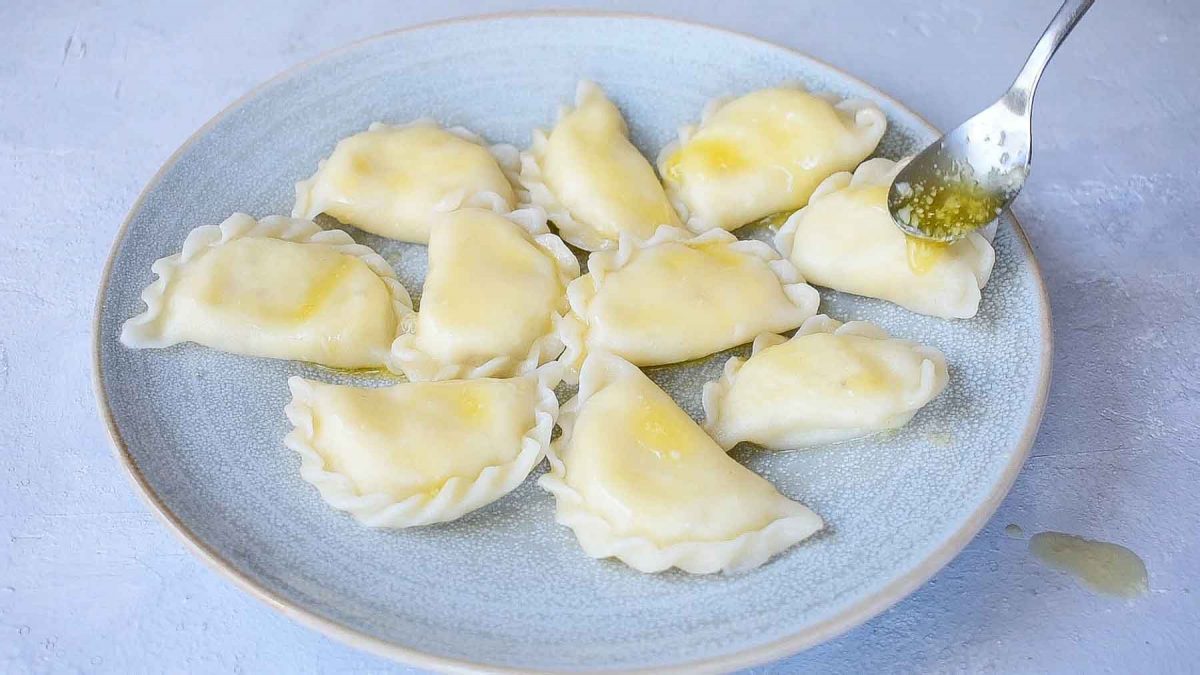
What are pierogi/pierogies?
Pierogi are Polish dumplings, made with unleavened dough and filled with sweet or savory fillings. They are boiled and then sometimes additionally pan-fried.
Pierogi in Poland:
Pierogi are one of the most popular Polish dishes. They are served as a main dish or as a side dish. The most popular pierogi are potato and cheese pierogi, sauerkraut and mushroom pierogi, and pierogi with meat filling (at least in the region where I’m coming from). In summer sweet pierogi (filled with fruits, like strawberries and blueberries) are popular. The flavor combinations are countless.
In Poland you can find small restaurants, where only pierogi are being served, they are filled with many different fillings. Such a restaurant is called ‘pierogarnia’.
Pierogi, Pierogies or Perogies?
Although the word ‘pierogies’ is popularized in English-speaking countries, it is not the true name of these Polish dumplings. The correct name is: singular – 1 pieróg and plural – pierogi. There are no other terms to name it.
What is the difference between pierogi and ravioli:
Ravioli are Italian dumplings, that are wrapped in pasta dough (this dough must contain eggs and is more rich and tough). Italian fillings also differ from traditional pierogi fillings.
Top tips for making the perfect pierogi dough:
- Traditional pierogi dough is easy to make without a recipe (I think no Polish grandmother makes it with a recipe, at least both my grandmothers don’t). The exact recipe is not important here, if the dough is too dry, you need to add some water, if too wet – a little bit of flour. However, it is worth having your favorite recipe and a kitchen scale on hand – the preparation goes much faster, the ingredients are added into a bowl and kneaded together, you don’t need to add additional water or flour.
- One of the most important things is, that the dough is well-kneaded!
- After kneading the dough, let it rest. You can see on my video how much softer and pliable the dough is after it has rested.
- Best water temperature – very hot but not boiling.
- Add some fat – it can be butter (more flavor) or oil.
- Don’t add eggs to the dough (more on that below).
- Dough to filling ratio: it’s very important, but it’s also a matter of taste. I like it when my dough is not very thin but also not very thick. I like to stuff my pierogi with lots of filling but I also like to taste the dough. Experiment what works best for you.
Easy pierogi dough ingredients:
- The best flour to make pierogi – I’m using all-purpose flour.
- Water – it’s important to add hot water to the dough. It makes the dough soft and pliable. You should warm the water with butter until they are very hot, but not boiling (temperature around 80-90 °C / 176-194 °F, that is when the water starts to move and steam). Too hot water will make the dough a little bit more chewy and sticky. Cold water will make the dough harder to roll out and it will be more difficult to shape the pierogi.
- Fat – you could make the dough without it, but it really makes the dough perfect. I’m using butter for its taste but any vegetable oil will also work.
- Salt – also the dough should be seasoned, not only the filling.
- I’ve seen some recipes that call for sour cream. Personally, I’ve never heard of such pierogi dough ingredient and don’t know anyone who is making pierogi with it (at least in Poland). I think it’s more an American or Russian/Ukrainian ingredient. Nowadays though, many home cooks experiment with the ingredients. Authentic Polish pierogi dough recipe call just for flour, water, salt, and optionally some fat and an egg.
Pierogi dough with egg or no egg:
There are two ways of making the pierogi dough – with or without an egg. Many Polish home cooks are arguing, which way is the best.
For me, the perfect pierogi dough is made without the egg. The dough with eggs is a bit tougher in my opinion, but the difference with a well-kneaded dough is not that huge (but there is a difference).
The second reason why I don’t add an egg is that it’s more hygienic – having a small child at home, I usually make a lot of pierogi in one batch, but making a lot of breaks in between. I do not have to worry about washing my hands thoroughly all the time, taking care if the table is well cleaned and watching out if my daughter is eating a dough with a raw egg.
By the way, you should try making pierogi with your kids. Rolling out the dough, cutting out rounds, shaping the pierogi – I think it’s a fascinating activity for every child!
Since this pierogi dough is made without eggs it is suitable for vegetarian diet, vegan diet or dairy-free diet (swap the butter for vegetable oil), or egg-free diet.
What equipment do you need:
- I love making my pierogi dough in my Kitchen Aid but you can also make it by hand. You’ll need to knead the dough for about 10 mins. A food processor can also be used (fitted with the dough blade), but I prefer the stand mixer.
- A rolling pin (or alternatively a wine bottle!). For rolling out the dough you can use a pasta maker (I’m sometimes using my Kitchen Aid pasta attachment). I find that it’s equally easy to roll out the dough by hand and with the pasta maker. Pierogi dough is much more pliable and soft in comparison to pasta dough, which makes it easier to roll out by hand.
- Pierogi cutter / pastry cutter / a cup (preferably with sharp edges). I prefer to use a real pierogi cutter or a pastry cutter – it’s easier to cut out rounds. A regular glass/cup can also be used but I find cutting out round a little bit harder as its edges are more thick and blunt. It would be better to use a glass that has thin, sharp edges if you don’t have a pierogi cutter (both my grandmas are using a regular glass though ;)).
- A pot to cook the pierogi (obviously) and a slotted spoon.
- There are pierogi maker press or pierogi molds available if you search online. I haven’t personally tried them out. Feel free to let me know if there are any that you really like!
How to make pierogi dough – step by step:
STEP 1: Add flour and salt to a large bowl.
STEP 2: Add hot water with butter.
STEP 3: Mix with a wooden spoon until roughly combined.
STEP 4: Knead the dough until smooth and soft.
STEP 5: Prepare the filling.
STEP 6: Roll out the dough and cut out the rounds.
STEP 7: Place the filling on the round.
STEP 8: Shape the pierogi. Ready to be cooked!
How to measure the flour:
In the recipe card below, I provided all possible measurements for the pierogi dough – by volume and by weight. I’m always using a kitchen scale to make my pierogi (and generally to develop the recipes on my website). If you’re weighing your ingredients on a scale your results will be very consistent and the same as mine. It’s really easier, quicker and a kitchen scale is super cheap!
If you’re measuring the flour with measuring cups there is a possibility that you will add more or less flour than I did. You need to check the consistency of the dough and add more flour if it’s too wet and more water if it’s too dry and too tough.
Measuring the flour with measuring cups is unfortunately very inaccurate. 1 US cup of flour can weigh from 120g-140g, depending on how you fill the cup. 20g is a little over 2 tablespoons of flour, so when this recipe calls for 4 cups of flour, you could have added 8 tablespoons more flour which is 1/2 cup! For measuring flour I’m spooning the flour into the measuring cup with a tablespoon and not scooping it with the cup. Level the flour with the back of the knife and don’t tap the cup or press down the flour. Read this article for more information on how to measure flour.
1 US cup is 240 ml. An European cup is 250 ml!
How to roll out the dough with a pasta maker:
Pierogi dough can also be rolled out using a pasta machine. I have a Kitchen Aid pasta roller attachment. I roll out the dough on setting 4. According to the manufacturer’s instructions you need to roll out the dough on each setting until you get to the setting 4. I’m not doing this, pierogi dough without an egg is easier to roll out than an egg dough or pasta dough. To make it possible, the dough must be well sprinkled with flour, at room temperature, slightly rolled out with a rolling pin (to a thickness of approx. ¾ cm / ½ inch) and smooth (otherwise will tear).
How to store pierogi:
To ensure that the cooked pierogi don‘t stick to each other, brush them lightly with melted butter or oil. Store in a tightly-closed container in the fridge for about 2 days. On the next day, it‘s best to pan-fry them with butter until golden.
Freshly cooked pierogi taste best for me, so I usually do this: I prepare only the amount of dumplings that we are going to eat on a given day (about 14 per person, my pierogi are rather small, see the video for the reference). I wrap the rest of the dough tightly in plastic foil and put it in the fridge. I place the rest of the filling (or make filling balls from all of the filling) and also tightly wrap in plastic foil and put in the fridge. On the next day (or even on the third day) I’m preparing the rest of the pierogi.
If I have more time and I’m making more pierogi in one batch, I freeze them or pan-fry with butter the next day.
After removing the dough from the fridge, it is good to slightly warm it up (leave it for about 15-30 minutes on the counter), it will be more elastic (this is optional). The next day the dough can look a little gray in color, but we don‘t mind that.
Freezing tips:
- Cooked pierogi: Place the pierogi apart on a tray, sprinkled well with flour. Freeze until solid. Transfer to containers on plastic bags. Cook like fresh pierogi but take them out once they float on the water surface.
- Uncooked pierogi: Note that not boiled raw pierogi are more likely to crack in a freezer than cooked pierogi. I most often freeze raw pierogi though. Place the pierogi on a tray / wooden board sprinkled well with flour (important, dumplings can easily stick to the tray and tear). Arrange the dumplings so that they do not touch each other. When frozen, transfer them into containers or plastic bags. I cook frozen dumplings just like fresh ones, with the difference that you can cook a smaller amount of them at a time, I cook max. 7-8 frozen pierogi at once (and about 10-12 fresh). When you drop too many frozen pierogi at once it will lower the temperature of the water too much and they will burst.
Store-bought frozen pierogi:
I’ve never eaten store-bought frozen pierogi that tasted amazing (maybe I’m just spoiled with homemade pierogi!). In terms of taste, some of them were not that bad, but for me, the dough is always too thick. This is not surprising since these pierogi are not made by hand. The dough manufactured in a factory need to be thicker so it won’t easily break and can be filled by a machine. Homemade pierogi all the way!
FAQ:
Knead the dough well then let it rest before rolling it out. A good recipe is also important – add butter and hot (but not boiling) water to the dough.
Toss the hot, freshly cooked pierogi with butter or oil until coated on all sides.
You can freeze cooked pierogi or uncooked pierogi. See the instructions above.
There’s no need to do that. You can throw frozen pierogi direct into boiling water.
I like to keep it simple and just pour melted butter over them. Other options are: sauteed/caramelized onions, pan-fried bacon, chopped parsley. Sweet pierogi are often served with sweetened heavy cream/sour cream.
Here you’ll find all my pierogi sauces and toppings ideas.
Yes! You can wrap the filling in shortbread pastry and bake until golden. This kind of pierogi is not that popular but in some regions, people are making baked pierogi.
Your dough was probably not evenly rolled out. Thicker pierogi will be a bit bigger, also when you fill them with more filling. If the dough is of the same thickness you can cook the small and big pierogi the same way.
Cut it into thick strips and use as pasta eg with soup.
It’s probably not well-kneaded, not rested or you’ve used cold water. It’s also possible that you’ve added too much flour – add more water until the dough is smooth and soft.
It really depends on your preferences. I really dislike dough that is rolled out too thick. When the dough is thinly rolled out it literally melts in your mouth after you cook the pierogi.
It will take a minimum of 5 minutes by hand and about 3 minutes in a stand mixer. It can take longer or shorter. You need to pay attention to the dough’ consistency – it should be smooth and soft (check out the video to see the consistency of the dough). It will be even softer when it’s rested.
The dough can be too elastic and shrink as you try to roll it out when it’s not rested. Make sure to rest the dough for about 20-30 minutes, then it should be easy to roll out. This is caused by gluten that is in every type of wheat flour.
Filling recipes:
I have a separate post, where I talk about all the traditional and modern pierogi filling ideas.
Here are the written recipes:
- authentic potato and cheese pierogi (pierogi ruskie) – with potato, twaróg cheese, and onion filling
- potato and cheese pierogi the American way (cheddar pierogi)
- sauerkraut and mushroom pierogi
- spinach and feta pink pierogi (basic pierogi dough is colored with beetroot juice!) with potatoes, onion, feta cheese, and spinach filling
- vegan/vegetarian pierogi with spicy lentil and sun-dried potato filling
- uszka (‘little ears’) pierogi – porcini (wild mushroom) filled mini pierogi for Christmas Eve Borscht
- sweet cheese pierogi
The best pierogi dough recipe + how to make perfect pierogi
Ingredients
- 4 cups flour 500g / 17.5-oz, spoon and leveled, all-purpose flour
- 1 cup + 2.5 Tbsp water 280g / 280ml / 10-oz (to weight on a scale)
- 3 tablespoons butter 1.4 oz/40g, or vegetable oil
- 1 teaspoon salt
Would you like to save this?
Instructions
→ Make the dough:
- Add the flour and salt into a large bowl, mix together.
- In a small saucepan, warm the water with butter until they are very hot, but not boiling (temperature should be around 80-85 °C / 176-185 °F, that is when the water starts to move and steam).
- Pour hot water with butter into the bowl with flour, mix with a wooden spoon until roughly combined.
- Knead the dough using your hands or with a stand mixer fitted with a hook attachment, for about 5 minutes. A food processor can also be used (fitted with the dough blade). The dough should be smooth, soft, and elastic, it shouldn’t stick to your hands. When you follow the recipe (especially if you weigh the ingredients, instead of using measuring cups), the dough should be perfect, but if for some reason it’s not, add some water if it’s too dry, or a little bit of flour if it’s too wet. If the dough already forms a ball, is relatively smooth, but still tough, it means that it’s not ready, it must be further kneaded until soft and elastic (after resting time it will be even softer).
- Wrap the kneaded dough in plastic foil (so it doesn’t dry out), leave to rest for about 30 minutes (it will be easy to roll out).
→ Rolling out, stuffing and shaping the pierogi:
- Divide the dough into 4 parts.
- Onto a lightly floured surface, roll out thinly the first piece of the dough, to a thickness of approx. 2 mm / 1/16 inch. If the dough is hard to roll out, set it aside for about 5-10 minutes to rest.
- Use a cup or a pierogi/pastry cutter to cut out rounds. Place one ball of filling / 1 teaspoon of filling on each round.
- Gather scraps, cover with plastic wrap and set aside.
- Fold the dough over the filling to create a half-moon shape. Press edges together, sealing and crimping with your fingers. Do not leave any gaps or pierogi may open during cooking.
- Place the pierogi apart on a towel lightly sprinkled with flour (this is important, they can stick to the board), cover loosely with a kitchen cloth so that they don‘t dry out.
- Repeat with the remaining dough.
-> Cook the pierogi:
- Bring a large pot of salted water to a boil.
- Cook the pierogi in batches (for a 21 cm /8-inch pot I cook about 10-12 dumplings at a time). When they float to the water surface cook them for 1-2 minutes, then remove from the water with a slotted spoon. The cooking time will depend on the thickness of the dough.
- Drain well and transfer onto a plate. Serve warm, pour over some melted butter.
- Enjoy!
Notes
To ensure that the cooked pierogi don‘t stick to each other, brush them lightly with melted butter or oil. Store in a tightly-closed container in the fridge for about 2 days. On the next day, it‘s best to pan-fry them with butter until golden.
Freshly cooked pierogi taste best, so I usually do this: I prepare only the amount of pierogi that we are going to eat on a given day (about 14 per person). I wrap the rest of the dough tightly in plastic foil and put it in the fridge. I place the rest of the filling (or make filling balls from all of the filling) and also tightly wrap in plastic foil and put in the fridge. On the next day (or even on the third day) I’m preparing the rest of the pierogi. If I have more time and I’m making more pierogi in one batch, I freeze them or pan-fry then with butter the next day.
After removing the dough from the fridge, it is good to slightly warm it up (leave it for about 15-30 minutes on the counter), it will be more elastic (this is optional). The next day the dough will be a little gray in color, but we don‘t mind that. – How to freeze pierogi: Cooked pierogi: Place the pierogi apart on a tray that is sprinkled well with flour. Freeze until solid. Transfer to containers on plastic bags. Cook like fresh pierogi but take them out once they float to the water surface. Uncooked pierogi: Note that not boiled raw pierogi are more likely to crack in a freezer than cooked pierogi. I most often freeze raw pierogi though. Place the pierogi on a tray / wooden board sprinkled well with flour (important, dumplings can easily stick to the tray and tear). Arrange the dumplings so that they do not touch each other. When frozen, transfer them into containers or plastic bags. I cook frozen dumplings just like fresh ones, with the difference that you can cook a smaller amount of them at a time, I cook max. 7-8 frozen pierogi at once (and about 10-12 fresh). When you drop too many frozen pierogi at once it will lower the temperature of the water too much and they will burst. – Rolling out with pasta machine: I have a Kitchen Aid pasta roller attachment. I roll out the dough on setting 4. According to the manufacturer’s instructions you need to roll out the dough on each setting until you get to the setting 4. I’m not doing this, pierogi dough without an egg is easier to roll out than an egg dough or pasta dough. To make it possible, the dough must be well sprinkled with flour, at room temperature, slightly rolled out with a rolling pin (to a thickness of approx. ¾ cm / ½ inch). and smooth (otherwise will tear). – 1 cup is 240 ml. – The amount of pierogi: based on the feedback that I got from readers, the amount of pierogi you’ll get from this recipe can vary greatly! My pierogi are rather small and I like to pack them with a lot of filling, that’s why I got 100 pierogi from this recipe. This may be different for you and you can get only half of this amount.
Did you make this recipe? RATE THE RECIPE or tell me in the COMMENTS how you liked it! You can also add a photo of your dish. It would make me very happy and will help other readers. Thank you!!


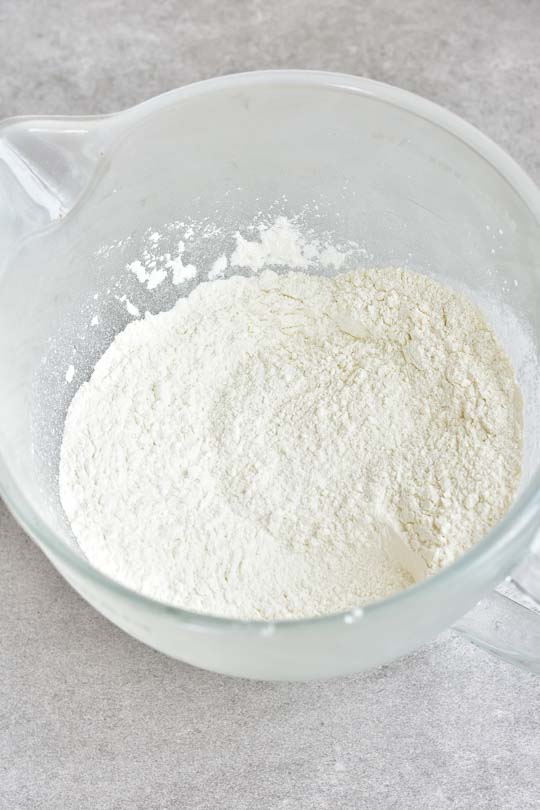
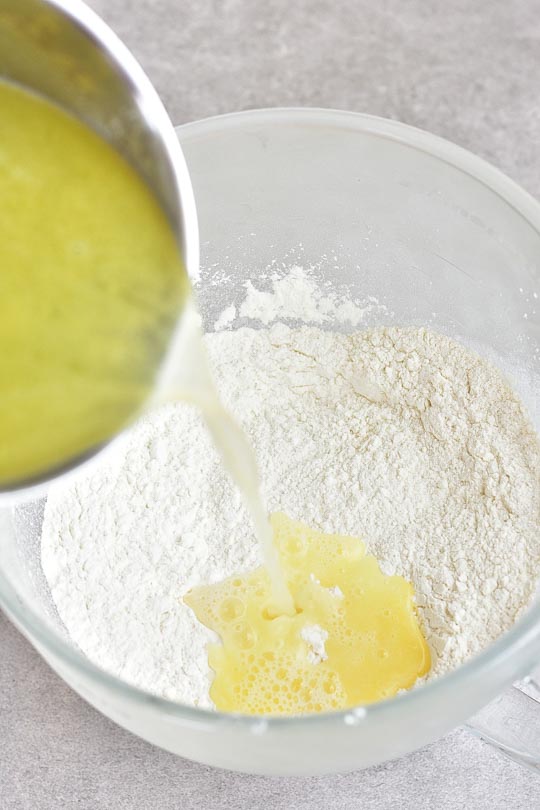


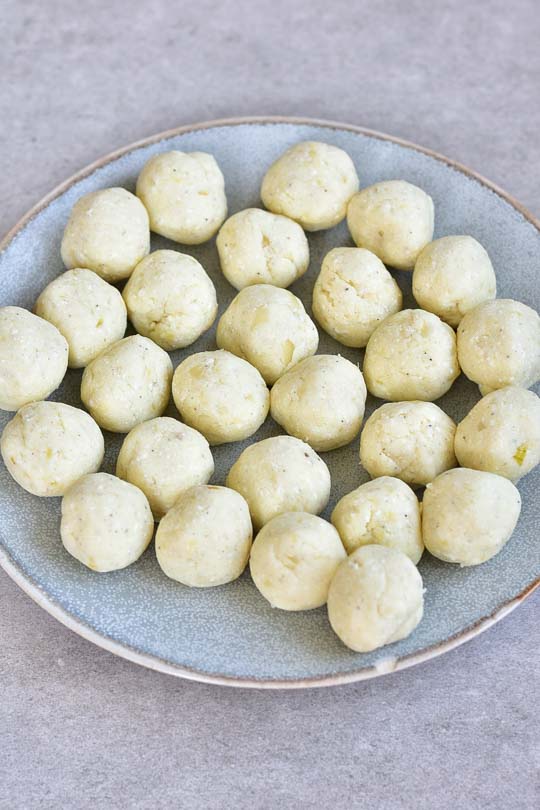
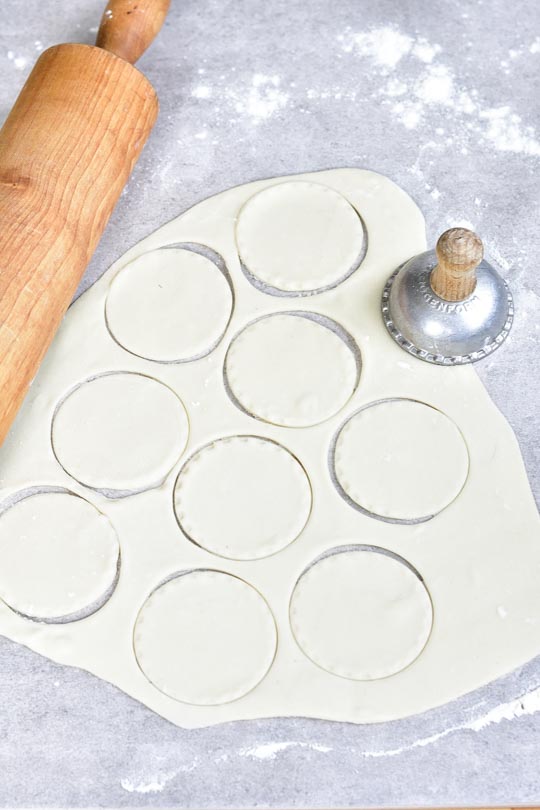
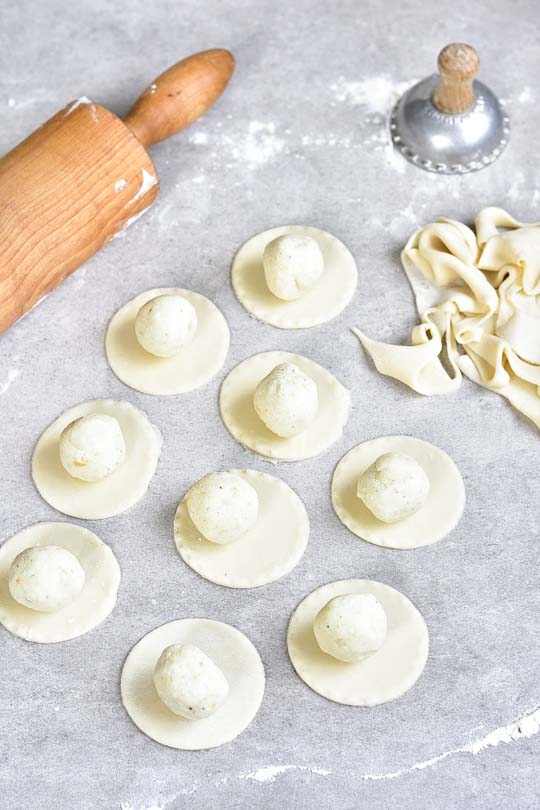
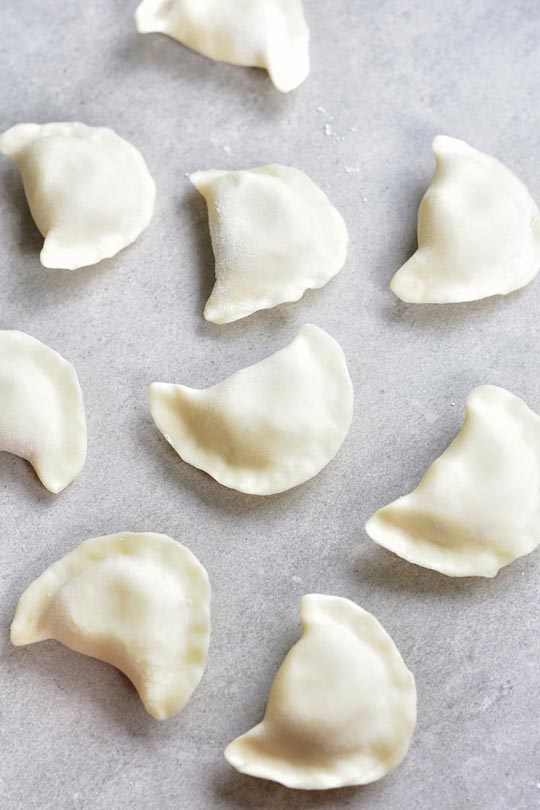
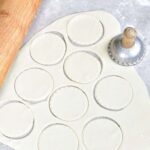
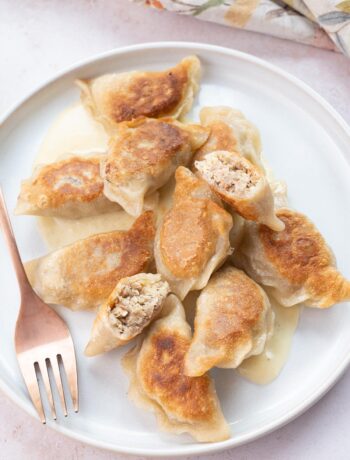
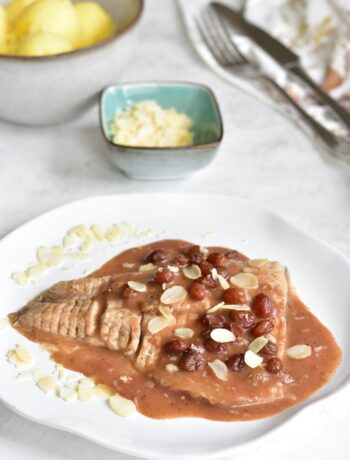

386 Comments
Natalia
4 December 2024 at 04:07I’ve been making pierogi with my family since I was a child. I am first generation, after my mom and her family came to America as refugees from the concentration camps in Poland. It is interesting how so many regions in Poland make them just a little bit different! I make 2 gallons of sour kraut each yr for Christmas as gifts. But bc it’s time consuming I cut then in small squares! Your dough recipe is amazing! It cuts down on so much work. Hot water is the way to go! Thank you.
Aleksandra
4 December 2024 at 05:53I’m happy it worked well for you!
Violet
4 December 2024 at 01:08Sorry!!! Been making pierogi all my life. THE worst dough I’ve EVER worked with!!! Made 1 dozen pierogi out of it and had to throw the rest out!!!
Aleksandra
4 December 2024 at 05:52Many readers had success with this recipe so something must have gone wrong. What was your problem with the dough? Let’s troubleshoot!
Jim
16 November 2024 at 22:33My grandparents came to America in the early 1900s just before my mother was born, so she grew up in a large Polish family, speaking and cooking Polish, on a remote farmstead in Northern Minnesota. Her pierogis were famous. Only years later did I learn that the pierogies from this community were different from the pierogies in Poland… and her recipe was not her mother’s recipe, but came from a family friend… and I’ve never seen it replicated anywhere. Her secret was including some mashed potatoes in the dough. It makes for a very tender dough, but surprisingly, it remains tough enough that it remains tender after freezing – much more so that non-potato dough. The other thing that was common in her community was that pierogies were boiled, then smothered in a decadent sauce made by softening a lot of onions in a lot of butter, then adding heavy cream and cooking it down slowly to a thick sauce. I thought this was the authentic way to serve pierogies until I got out into the broader world. I’ve visited the area in Western Poland her parents came from and they do not use this heavy sauce and I’ve not seen it anywhere in Poland. Our assumption is that these people, living without electricity and modern refrigeration on remote farms had a whole lot of extra cream and butter and this was a way to use it up – a delicious way. I have my mother’s recipe, only we videotaped her making it and we stopped her and measured the ingredients – she, of course, just made them based on experience and feel.
Rosita
10 November 2024 at 21:56This is the best pierogi dough recipe. It makes the softest most delicious dough. It is the only recipe I will use now. I used pasta flour and it worked beautifully. Thank you Aleksandra for sharing your recipe.
Aleksandra
12 November 2024 at 18:34I’m so glad to hear that, thank you for leaving the comment!
Caren
20 October 2024 at 15:46I was skeptical at first, didn’t feel like the best dough I had made (and I’ve made a lot in the last 60 years) and I admit I am used to having egg (my mother’s recipe: as many eggs as you can afford) and I really wasn’t sure about the hot water. But. You got me with using the stand mixer. I ran out of time the day I made the dough so I just cut some off and make thickish noodles to mix with sautéed cabbage. I felt the noodles were a bit, uh, limp? Anyway, got the rest of the dough out the next day and used my pasta roller to work it. Made my perogies (potato and cheddar) and cooked them, believe it or not, in the InstantPot on the saute setting because I was canning leftover turkey and my pressure canner takes up most of the stove. They turned out great. And I just finished a plate of them for breakfast this morning fried in bacon fat. They’re a still a few left over, and I may freeze them or hubby and I can finish them off in the morning. As for the quantity, I have always felt that there is no point in making a small batch of perogies. Sometimes, I will plan a whole weekend spent on making them just to stock up the freezer. Now I am going to go and check out your recipes for other fillings. I would love to try a sauerkraut filling, and even a mushroom one. Thanks for the postings.
Stacey
25 October 2024 at 22:36Hello, I am Ukrainian and my grandma came from the Ukraine where she grew up. She learned to make pierogi from her mother and grandmother. Her grandmother was born in 1884 and learned how to make pierogis from her mother. We never called pierogi pierogi when I was growing up. We called pierogi, parahei, in our house. My grandmother never used measurements but knew exactly how much flour, salt, water and a little vegetable oil or butter to use in order to get the precise texture. It was always about the feel of the dough. She never ever used sour cream in her dough. Perhaps, that is something created in Poland, or something Americanized.
Pierogi was made because it was cheap like borscht to make. Flour, salt, water, potatoes and butter if you were lucky.
TK
15 October 2024 at 04:27I’ve been trying for decades to come anywhere close to my Babcia’s dough. This is fantastic.
Jayne offchiss
2 October 2024 at 18:16It was the
best pierogie dough in ever made.really liked the recipe, it worked well!.
Hotwater Nurse
19 September 2024 at 19:18I had problems with flour, water ratio but did compensate
Also did use dough cycle in my bread machine to mix
Dough came out great No shrinking or pull back
Will be my go to dough
Thanks
Brooke
2 September 2024 at 18:20Great recipe! Coming back for a second time. My baba told me her secret… to put sour cream in the dough to keep it soft but this dough felt like it did the trick without!
Kelley Kajdasz
15 October 2024 at 18:38What is “plastic foil”?
Aleksandra
16 October 2024 at 14:33food plastic wrap / cling film
MARY WIEBE
5 August 2024 at 16:08Nicest texture of dough I have used. Great recipe.
Family of 6, gobbles them up. Do I have to make individual batches of dough, or can I double the recipe? Thank you.
Aleksandra
5 August 2024 at 16:21I’m happy to hear that! You can easily double, triple, quadruple.. the recipe 🙂
Nancy
2 August 2024 at 21:59It was delicious! Tastes just like my friends grandma used to make!
Dave
12 May 2024 at 01:53Yup! The quintessential pierogi dough recipe. I’ve tried many versions, egg, no, egg, a pâte à choux start, sour cream, oil,and every combination of iterated ingredients, plus, and hand to the Almighty, this one is the best. Scale measured and the dough was perfect. Rolled on the Kitchen Aid pasta roller to 4 as prescribed. Love how stretchy the dough is and a small round can accommodate a lot of filling. Thank you!
Aleksandra
2 June 2024 at 18:50you’re welcome! so happy it worked well for you
Teresa
17 April 2024 at 20:26I’d give it 10 stars if I could. The dough was PERFECT; easy to handle, easy to seal and it cooked perfectly. I had some leftover filling after rolling out all the dough, so I used the scraps to roll out a few more and they cooked up great; maybe just a touch tougher than the original dough but it was barely noticeable. I used ricotta in the filling (straining it to make sure it wasn’t watery) and both a russet and a yellow potato to use up what I had. The only other change was to add just a touch of nutmeg to the filling. Thank you!
Aleksandra
18 April 2024 at 15:00I’m so happy with your comment!
Patricia
31 March 2024 at 18:48This was absolutely the best pierogi dough recipe that I have ever used! The dough was so easy to work with and the pierogi were very tasty and soft. Fabulous! I will never use another recipe. Thanks for sharing it with all of us!
Aleksandra
31 March 2024 at 19:23I’m happy it worked well for you, thank you for leaving the comment!
Carol W.
19 February 2024 at 23:00I feel so guilty typing this but this recipe is better than my Mom’s, my aunts, and my cousins recipes (all of Slovak/Polish decent)! This is the recipe I have been searching for! They taste just like the pierogis you buy from the church made by the pierogi crew every Lent. The dough is DELICIOUS!! And the time you took to add so many details of how to freeze them without sticking, the recommendations on the left over dough, and so much more. So very helpful. And, I’m so impressed with myself! I made perfect pierogi’s thanks to you! The dough is so easy to work with, pinches together so easily and SO delicious. Now I need a good recipe for sauerkraut filling (per request of my family). Thank you again. May many blessings find their way to your door step. Thank you so much for sharing and for the time you put into the recipe details.
Aleksandra
20 February 2024 at 06:01I’m so happy to hear that! Thank you for such an amazing review! I have a recipe for sauerkraut and mushroom filling, which I love. It’s here: https://www.everyday-delicious.com/sauerkraut-and-mushroom-pierogi-recipe/. Or maybe you have meant a filling with just sauerkraut?
Adarene
9 January 2024 at 21:11Great, i have tried several times with not too much success.. this time i am a happy cook . Thank you!
Aleksandra
10 January 2024 at 05:39you’re welcome!
Jeremy
7 January 2024 at 17:23Approx. exactly like what I remember as a kid growing up – thank you!
SHAWNMARIE PRYMUS
4 January 2024 at 20:41Absolutely the best recipe for dough. Tried many only one that worked out. But didn’t get 100 one got 40 but maybe it was to thick or I used 3 inch. But it’s still the best thank you ☺️
Aleksandra
4 January 2024 at 20:54thank you for commenting! I roll out my pierogi very thinly and add a lot of filling. I also make them very small, that’s why I get about 100 from this recipe.
Rico
31 December 2023 at 15:1210 stars! Many online recipe sites claim to have the “best pierogi dough recipe” but you really do have it. Congratulations! I’ve been making these for years trying many different dough recipes with mixed results. I stumbled upon your site yesterday and followed the recipe to the letter….no modifications. The recipe was flawless. The result was exactly 100 easily rolled, filled and sealed potato-cheese varenyky. The best part was that the dough easily went through the rollers on my Kitchen Aid pasta attachment, which made the work much easier and the results consistent.
This will be my family’s “go-to” dough forever. Well done! Happy New Year to you!
Aleksandra
31 December 2023 at 15:52Thank you so much for taking the time to write such an amazing review! Happy New Year!
Beth
27 December 2023 at 22:09What size round do you cut your pierogi?
Aleksandra
28 December 2023 at 10:59about 7 cm (2 3/4 inches)
Kathy
26 June 2024 at 21:29This recipe turned out perfect. Tasted like my grandma’s and her recipe was straight from Poland over 100yrs ago.
She made all sorts of pirogie, and she didn’t use measurements so the recipe she gave me didn’t quite work. Other recipes didn’t taste right. My grandsons had passed some t years ago I believe she used cooking oil, I like the butter. Next batch is going to be huge and frozen. Thank you so much for sharing yours.